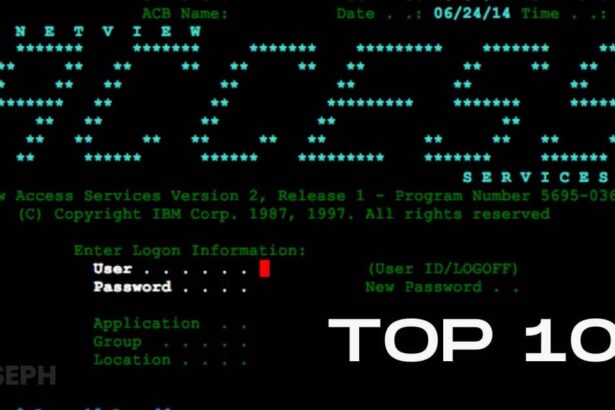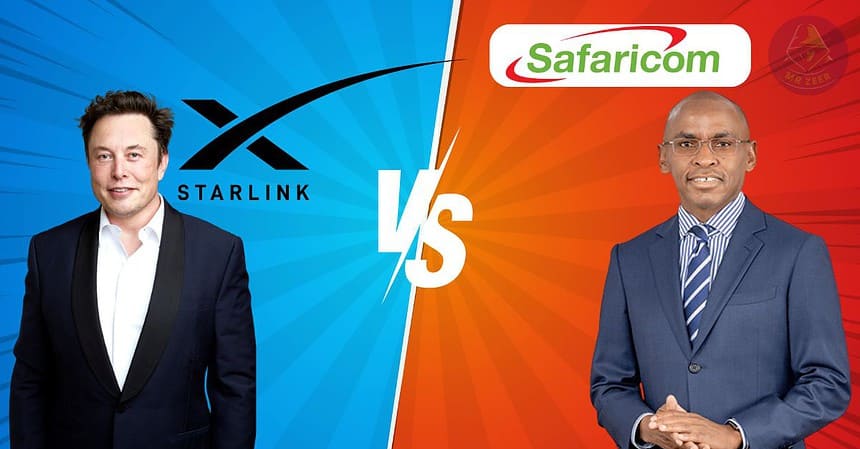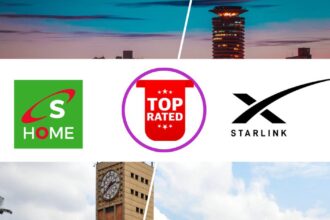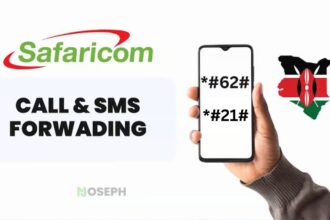Kenya’s internet market is experiencing a shift with the arrival of Starlink, which is challenging Safaricom’s long-standing dominance. As more people rely on fast, stable internet for work, education, and everyday life, this competition has sparked a lot of interest.
For years, Safaricom has been the top choice, known for its wide coverage and reliable service. But with Starlink now available, especially in areas where Safaricom struggles, many are starting to wonder which provider is better.
Starlink has caught attention with competitive pricing and better coverage in remote regions. In response, Safaricom sent a letter to the Communications Authority of Kenya on July 5, 2024. They asked for tighter rules on satellite providers like Starlink, arguing that these companies should partner with local providers. This move reflects Safaricom’s concern about losing its monopoly.
This has led to many conversations online, with people comparing the speeds, reliability, and value of both services. If you’re looking for more options, you can check out my guide to the best internet providers in Kenya.
In this article, I’ll compare Safaricom and Starlink on key factors like speed, reliability, coverage, and technology. By the end, you’ll have a clear understanding of which provider suits your needs as Kenya’s internet options continue to grow.
Starlink Vs Safaricom: Comparison Table
Before we continue, I’ve created a comparison of Starlink and Safaricom based on my personal experience with Safaricom and insights from YouTube content creators like African Josh, Iko Nini, and iMoses. This table highlights the key differences in speed, coverage, and pricing, helping you identify which service might best suit your needs in different areas.
| Feature | Starlink | Safaricom | Notes |
|---|---|---|---|
| Download Speed | 50-500 Mbps | 10-244 Mbps (5G) | Speeds vary based on location and plan. |
| Upload Speed | 20-50 Mbps | 5-78 Mbps (5G) | Higher upload speeds in urban areas with 5G. |
| Latency | 20-40 ms | 10-20 ms | Lower latency is better for gaming and video calls. |
| Coverage | Rural & Remote Areas | Urban Areas | Starlink excels where traditional services struggle. |
| Data Plans | Unlimited | Capped or Unlimited | Starlink’s unlimited data is ideal for heavy users. |
| Hardware Costs | KES 45,500 (Kit Purchase) or rental | Low-Cost Router (Free with contract) | Starlink offers a rental option to reduce upfront costs. |
| Price (Monthly) | KES 6,500 – 14,000 | KES 2,999 – 12,499 | Starlink’s flexibility comes with higher costs. |
| Customer Support | Online Channels | Physical Stores & Call Centers | Safaricom has a broader support network. |
| Priority Data | Available during peak times | Not available | Starlink prioritizes data when usage limits are reached. |
| Performance in Weather | Can be affected by severe weather | Less affected by weather conditions | Starlink’s connection may falter in heavy rain or clouds. |
| Payment Flexibility | Monthly or as low as KES 1,300 with a 50GB plan | Monthly contracts with limited data options | Starlink offers more flexible payment plans. |
1. Technology and Infrastructure
Having a clear grasp of the technology behind Starlink and Safaricom is essential for making an informed decision. With my extensive experience in server-side networking, I will explain how these technologies influence factors such as speed, reliability, and the overall user experience.
Both companies have developed their networks using different approaches, each offering unique advantages and some limitations.
Starlink’s Satellite Technology
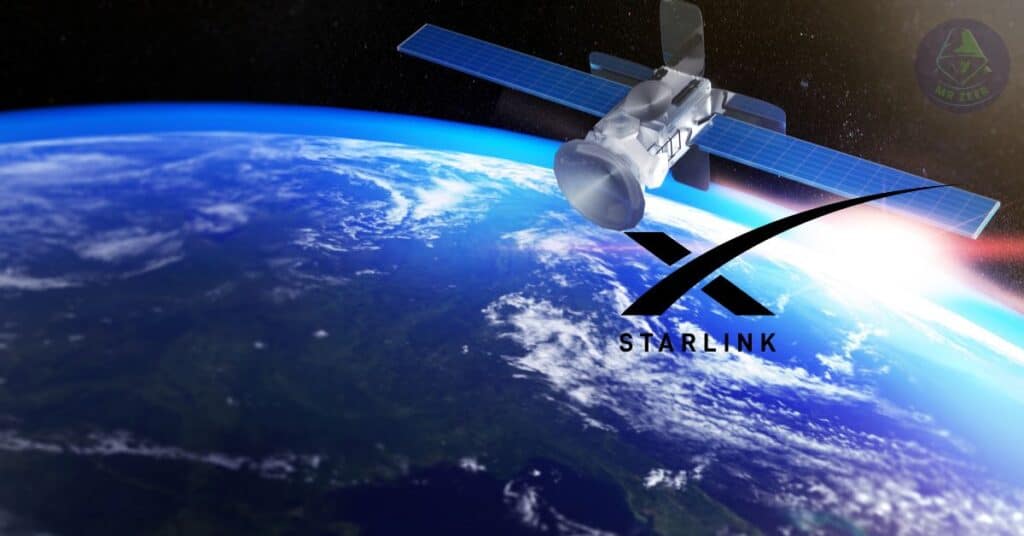
- Low Earth Orbit Satellites: Starlink operates a network of satellites that orbit close to the Earth. This proximity significantly reduces latency and provides faster internet speeds, making it especially beneficial for users in remote and rural areas where traditional internet services are often unavailable or unreliable.
- Dynamic Signal Management: Starlink utilizes phased array antennas that constantly adjust to maintain a strong connection with the most optimal satellite at any given moment. This continuous adjustment ensures a stable and consistent internet connection, even as satellites move across the sky.
- Laser Communication Between Satellites: The system employs laser links to allow satellites to communicate directly with each other. This method speeds up data transmission across the globe by reducing dependence on ground-based relay stations, resulting in quicker and more efficient data flow.
- AI-Powered Network Optimization: Advanced artificial intelligence algorithms are used to manage and optimize network performance dynamically. This technology effectively balances data traffic to maintain low latency and high reliability, even during periods of fluctuating demand across different regions.
- Self-Deploying User Terminals: Starlink provides user terminals that are designed for easy and quick self-installation. Users can set up their internet connection without the need for professional assistance, which is particularly useful in isolated areas where technical support may not be readily accessible.
Safaricom’s Fiber and Mobile Networks
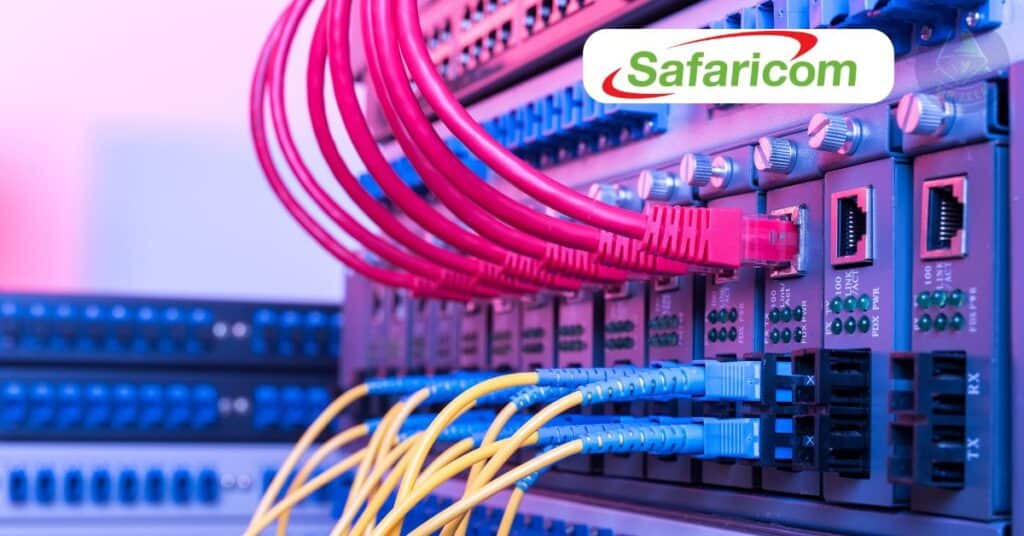
- Extensive Fiber Network: Safaricom has established a widespread fiber-optic network across urban areas in Kenya. This infrastructure delivers high-speed and reliable internet services that support various activities such as streaming high-definition videos, online gaming, and seamless video conferencing.
- 4G and 5G Networks: With comprehensive 4G coverage and ongoing expansion of its 5G network, Safaricom offers users the convenience of fast and dependable internet connectivity while on the move. This mobile network infrastructure ensures that users can access the internet from virtually anywhere within coverage areas.
- Undersea Cables: Safaricom leverages multiple undersea fiber-optic cables, including the East African Submarine Cable System (EASSy) and the SEACOM cable, to connect Kenya to the global internet backbone. These connections improve international connectivity and reduce latency for overseas data transmission, enhancing the overall browsing experience.
- M-PESA Integration: A unique feature of Safaricom’s services is the seamless integration with M-PESA, Kenya’s leading mobile money platform. This integration allows users to easily manage payments for services like data bundles and utility bills directly from their mobile devices, adding a layer of convenience to their daily transactions.
- Private LTE Networks: Safaricom offers dedicated LTE networks tailored for businesses, providing secure and reliable internet connectivity that supports critical operations. These private networks ensure consistent performance and are customizable to meet specific organizational needs.
Key Takeaways
The technology behind Starlink and Safaricom directly affects their performance across different parts of Kenya. Starlink’s satellite network is especially effective in rural and remote areas like North Eastern and Turkana, where traditional services often struggle to reach. This makes it a reliable option for those outside major cities. On the other hand, Safaricom’s fiber and mobile networks provide fast and stable connections, making them ideal for urban areas such as Nairobi, Kisumu, and Mombasa.
Next, let’s explore how these services are distributed across Kenya and see how well they perform in different regions.
2. Coverage and Availability
Now that we’ve covered the technology behind Starlink and Safaricom, it’s time to look at how these services are distributed across Kenya. The reach of each provider greatly influences which one might be better suited to your needs, especially if you live in an area where reliable internet has been hard to come by.
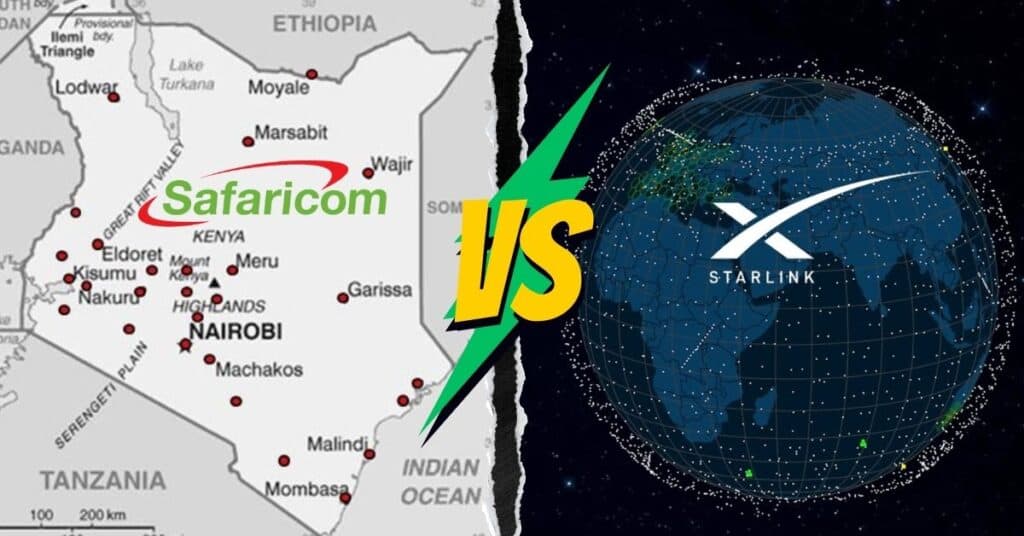
Starlink’s Coverage in Rural Kenya
- Wide Access Across Kenya: Starlink provides internet access across all regions of Kenya, including areas like North Eastern and Turkana, which have often been underserved. This makes it a strong option for those who are outside major cities and need a reliable connection.
- Reliable Service in Remote Locations: Many people in rural Kenya have shared positive experiences with Starlink. The service has brought fast and steady internet to places that have struggled with poor connectivity in the past, opening up new opportunities for communication, education, and business.
- Affordability and Accessibility: Initially, the cost of Starlink’s hardware was a concern for some users. However, with the introduction of a rental kit option, the service has become more accessible, particularly in rural areas. This has allowed more people to benefit from Starlink without the need for a large upfront investment.
- Weather Considerations: While Starlink generally provides stable service, it can be affected by severe weather, such as heavy rain or thick clouds. These conditions might cause temporary disruptions, but under normal conditions, the connection is reliable.
Safaricom’s Coverage in Urban Areas
- Strong Urban Coverage:Safaricom’s 5G network is most effective in cities like Nairobi, Kisumu, and Mombasa. Users in these areas enjoy fast, stable internet that supports activities like streaming, gaming, and video calls.
- Limited Reach in Rural Areas: In contrast, Safaricom’s coverage outside urban areas is more limited. While the company is expanding its 5G network, many rural areas still rely on older 4G networks or less consistent fiber connections, which may not offer the same level of service.
- Global Connectivity: Safaricom benefits from undersea cables that improve the speed and stability of international internet traffic. This is particularly useful for users who frequently access content or services hosted outside of Kenya.
Key Takeaways
Starlink and Safaricom each have strengths that align with different needs across Kenya. Starlink is well-suited for those in rural or remote areas, providing a consistent connection where other services might struggle. Meanwhile, Safaricom’s focus on urban areas ensures fast and reliable internet, making it ideal for people living in cities.
Next, we’ll explore how these services compare in terms of speed and reliability.
3. Speed and Reliability
Choosing the right internet service depends heavily on how it performs in real-world conditions. Whether you’re streaming movies, gaming online, working from home, or creating content, having a stable and fast connection makes all the difference. Let’s explore how Starlink and Safaricom compare when it comes to delivering the speed and reliability you need.
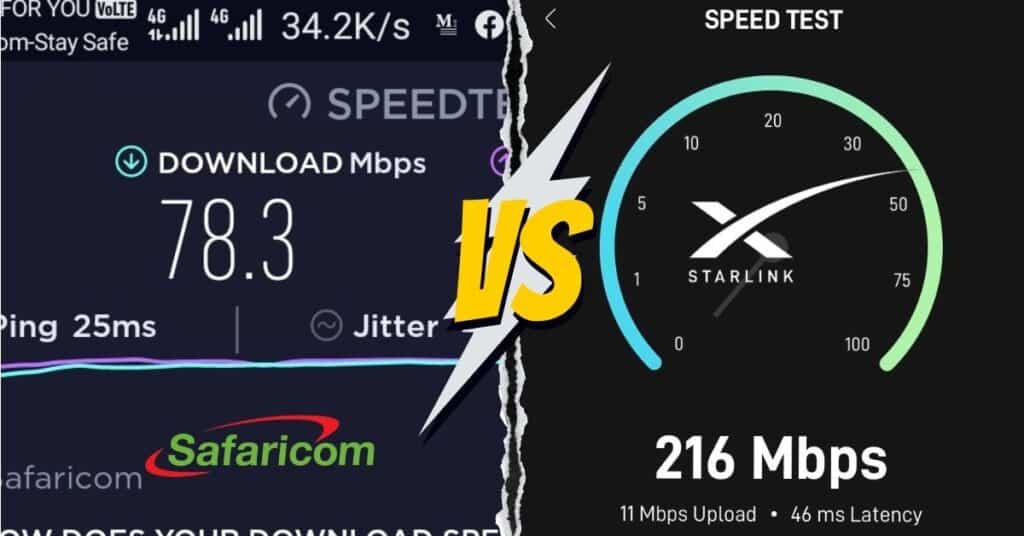
Starlink’s Performance
- Speed: Starlink offers download speeds ranging from 50 Mbps to 500 Mbps, with upload speeds generally between 20 Mbps and 50 Mbps. These speeds are sufficient for a wide range of activities, including high-definition streaming, video conferencing, and online gaming. However, actual speeds can vary depending on your location, network congestion, and the specific environment.
- Latency: Starlink’s latency generally falls between 20 ms and 40 ms, which is quite low for a satellite-based service and adequate for most online activities. However, for gamers and those involved in real-time applications like video calls, this latency is low enough to ensure a smooth experience, though there might still be a slight delay compared to fiber connections.
- Connection Stability: Starlink usually provides a stable connection, though it can be affected by weather conditions such as heavy rain or thick clouds. These interruptions are typically brief but could impact activities that require continuous connectivity, such as live streaming or gaming.
- Unlimited Data: Starlink offers unlimited data, which is a significant advantage for gamers, content creators, and anyone who needs to upload or download large files regularly. However, during peak times, users might experience slower speeds in more congested areas to ensure fair access for all.
- Expanding Network: Starlink is continuously launching more satellites to improve coverage, speed, and latency. This ongoing expansion could lead to better performance in the future, making it a more viable option for demanding online activities like streaming 4K content or engaging in large-scale multiplayer gaming.
Safaricom’s Performance
- Speed: Safaricom’s internet packages for residential users offer download speeds ranging from 10 Mbps to 100 Mbps, with the Diamond package offering the highest speed at 100 Mbps. These speeds are sufficient for most household needs, from basic browsing and streaming to online gaming and multiple device usage.
- Upload Speeds: Depending on the package, Safaricom’s upload speeds typically range from 5 Mbps to 20 Mbps. These speeds support activities like video calls and file uploads, though the exact performance may vary based on the specific package and location.
- Latency: Safaricom’s 5G network offers low latency, typically between 10 ms and 20 ms, making it suitable for competitive gaming, video conferencing, and live streaming. This low latency is especially beneficial for applications requiring immediate data response.
- Reliability: Safaricom is known for its reliable service, especially in urban areas where its infrastructure is most developed. However, in rural regions, where the network may rely on older 4G technology, users could experience slower speeds and occasional disruptions, which might impact tasks like streaming or real-time online gaming.
- Network Upgrades: Safaricom is actively expanding its 5G network and upgrading its 4G infrastructure. These efforts aim to improve coverage and provide more consistent speeds, even in areas that currently have less reliable service.
Key Takeaways
Both Starlink and Safaricom offer distinct advantages depending on your location and internet needs. Starlink’s satellite network, with speeds ranging from 50 Mbps to 500 Mbps, is particularly beneficial for rural and remote areas, providing reliable speeds without data limits.
Safaricom’s 5G and fiber networks, with speeds ranging from 10 Mbps to 100 Mbps, are well-suited for urban areas, offering faster speeds and lower latency, making them a strong choice for competitive gamers, live streamers, and professionals.
Next, we’ll explore how these performance factors contribute to the overall value and pricing of these services.
4. Pricing and Value
When it comes to choosing an internet service provider, pricing is a key factor that can significantly influence your decision. It’s important to not only consider the cost but also to assess the value you’re getting in terms of speed, reliability, and additional features. Let’s compare the pricing models of Starlink and Safaricom to see which offers the best value for your money.
Starlink’s Pricing
- Residential Plan: Starlink offers a residential plan for KES 6,500 per month, providing unlimited high-speed, low-latency internet. This plan is ideal for households that need a reliable connection for streaming, gaming, and other data-intensive activities.
- Roam Plan: For users who need portability, such as those in RVs or traveling frequently, Starlink’s Roam plan costs KES 14,000 per month. This plan includes unlimited mobile data, with features like portability and the ability to pause the service when not in use.
- Boats Plan: For maritime or emergency response applications, Starlink’s Boats plan starts at KES 34,910 per month, offering unlimited mobile data with network priority and in-motion use. Prices can go up significantly based on data needs, with options reaching as high as KES 698,212 per month for priority data services.
- Hardware Costs: The initial setup for Starlink involves purchasing a satellite kit, which costs around KES 45,500. While this can be a high upfront cost, Starlink also offers a rental kit option to make the service more accessible to users who may not want to invest heavily in the hardware upfront.
- Flexibility: One of Starlink’s key selling points is the lack of contracts, allowing users to pause or cancel their service without long-term commitments. This flexibility can be particularly attractive for users who might need internet only seasonally or in specific locations.
Safaricom’s Pricing
- Bronze Package: Safaricom’s entry-level package offers 10 Mbps for KES 2,999 per month. This package is suitable for basic browsing and streaming but may not be ideal for households with multiple devices or high data usage needs.
- Silver Package: The Silver package provides 20 Mbps for KES 4,100 per month, which is adequate for households with moderate streaming and video call needs.
- Gold Package: For KES 6,299 per month, the Gold package offers 40 Mbps, making it a better option for users who engage in online gaming, heavy streaming, or have multiple devices connected simultaneously.
- Diamond Package: The top-tier Diamond package offers 100 Mbps for KES 12,499 per month. This plan is designed for power users who require fast download and upload speeds, such as content creators, gamers, or households with high bandwidth needs.
- Additional Costs: Unlike Starlink, Safaricom does not require users to purchase expensive hardware upfront. However, users may need to pay for installation and any necessary equipment, such as routers or extenders, especially if upgrading to fiber-optic service.
- Contractual Obligations: Safaricom typically requires users to sign up for contracts, particularly for their higher-end packages, which might not be as flexible as Starlink’s no-contract model.
Key Takeaways
When comparing the pricing and value of Starlink and Safaricom, your choice will depend heavily on your location, usage patterns, and budget:
- Starlink: Offers a high initial cost but provides flexibility and high speeds in rural or remote areas. Its unlimited data plans are particularly appealing for users with heavy data needs, such as gamers, content creators, or remote workers. The rental kit option also lowers the barrier to entry, making Starlink more accessible to a broader audience.
- Safaricom: Provides more affordable entry-level packages with speeds that cater to different needs, especially in urban areas. However, the speed and reliability in rural areas might not match that of Starlink, and contractual obligations might limit flexibility.
5. User Experiences and Feedback
Hearing from actual users and experts provides valuable insights into how both Starlink and Safaricom perform in everyday situations, offering a clear picture of what each service truly offers.
Starlink’s Strong Performance in Rural Areas
Starlink has gained considerable attention in rural Kenya, where traditional internet services often struggle to deliver. On July 15, 2024, Iko Nini’s YouTube channel, which has over 120,000 subscribers, reviewed Starlink’s satellite internet kit. The review highlighted the easy setup process and significant improvements in speed and reliability, particularly in remote areas like Turkana.
This makes Starlink an appealing option for users who need consistent connectivity in regions where other providers might not perform well. The review also pointed out that Starlink’s pricing provides a refreshing alternative to Safaricom, especially in underserved areas where affordable and reliable internet is crucial.
Safaricom’s Reliability in Cities
In urban areas like Nairobi and Mombasa, Safaricom continues to be a trusted provider, offering reliable 5G connections and the added convenience of M-PESA integration. As someone who has used Safaricom Home Internet for over three years, I’ve noticed that the service tends to slow down as my subscription nears renewal, an issue that has led many, including those featured on Iko Nini’s channel, to explore alternatives like Starlink.
Growing Support for Starlink in Kenya
Starlink has been gaining popularity, especially among content creators and tech enthusiasts. On August 30, 2024, this growing interest was discussed in a podcast episode on Lynn Ngugi’s YouTube channel, which has over 1.03 million subscribers. The episode highlighted how Starlink’s competitive pricing, despite its higher initial equipment costs, is making it a viable option for many users in Kenya.
During the discussion, IT consultant Evance Omondi explained Starlink’s “priority data” feature. He noted that after using up your data package, your connection might be slowed down during peak times based on how many users are active and how many Starlink dishes are available in your area. Omondi also pointed out that while this feature works effectively, it might not have as much impact in Kenya due to the lower number of Starlink dishes compared to regions like the USA.
Critique of Safaricom’s Pricing
Iko Nini has consistently been critical of Safaricom’s pricing, arguing that internet services should become more affordable over time, not more expensive. This sentiment resonates with many Kenyans, including myself. After using Safaricom for over three years, I’ve noticed that its high costs can be burdensome, especially when compared to emerging alternatives like Starlink.
Customer Support and Service Accessibility
Starlink offers responsive customer support primarily through online channels, aligning well with its straightforward setup process. In contrast, Safaricom provides a more extensive support network, including physical stores and call centers, making it easier for customers to access help when needed. This difference highlights Starlink’s appeal to tech-savvy users, while Safaricom caters to a broader audience with varying levels of technical expertise.
Concerns Over Pricing and Market Control
The conversation on Lynn Ngugi’s podcast also touched on concerns about Safaricom’s pricing and its dominant position in the Kenyan market. Many users, including those featured in the podcast, feel that Safaricom’s market power has led to higher prices without significant improvements in service quality.
Starlink’s entry into the market is seen as a positive disruptor, offering competitive pricing and encouraging better service from existing providers. The potential reduction in Starlink’s device prices to around KES 22,000 further reflects the evolving landscape and the pressure on traditional ISPs to adapt.
Final Thoughts
Comparing Starlink and Safaricom shows that both services offer unique benefits based on where you live and what you need from your internet provider. Starlink stands out in rural and remote areas, providing dependable high-speed internet where traditional services often fall short. On the other hand, Safaricom remains a reliable option in cities, offering fast and stable connections through its 5G and fiber networks.
User experiences reveal important differences in pricing, reliability, and overall satisfaction. Starlink’s satellite technology and flexibility attract many, particularly content creators and gamers, while Safaricom’s established network and wider support make it a trusted choice in urban settings.
Your decision between Starlink and Safaricom should be guided by your location, how you use the internet, and your budget. With recent discussions suggesting that Safaricom might increase internet speeds, staying informed will help you choose the best service for your needs in Kenya.
Share your thoughts in the comments below. Do you think Starlink will push Safaricom to improve, or is Safaricom still the top choice for city dwellers? Your input matters!

